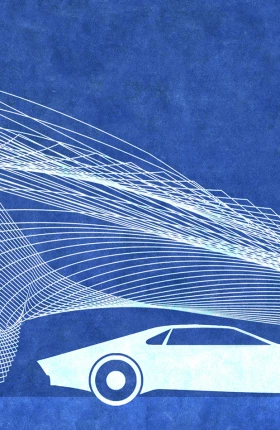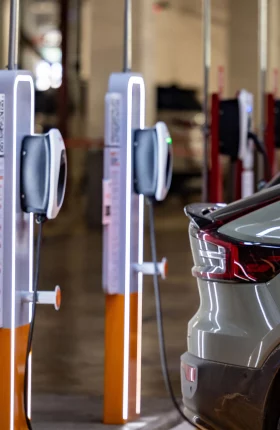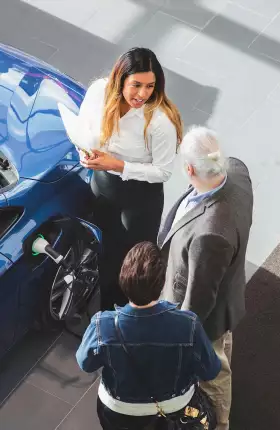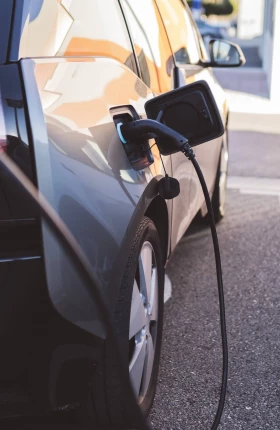Ten years ago this coming August, Elon Musk posted a blog item on Tesla Motors’ website laying out what he wryly described as the fledgling company’s “secret master plan” to succeed in electric cars. Tesla’s first product, the Roadster sports car—which was then still a prototype—would be the first in a wide range of fully electric vehicles (EVs). The high premium that buyers would pay for the Roadster, which Musk claimed would outperform many sports cars, would help Tesla fund the technology and production scale needed to market its successor, “a sporty, four-door family car,” and eventually a more affordable, mass-produced car. To many of the world’s established automakers, it was a quixotic vision.
The stunning consumer response to Tesla’s Model 3, the $35,000 sedan that was unveiled on March 31 of this year, appears to prove that Musk’s bold master plan remains on track. Moreover, it could well mark the day that electric vehicles went from being niche to mainstream products. Within two weeks, Tesla received nearly 400,000 advance orders from customers who put down refundable deposits of $1,000—some after queuing outside Tesla showrooms—on a car they had never seen.
If Tesla can ramp up production to meet this demand, which has far exceeded industry expectations, it could emerge as the leader in EVs. It could have around 1 million cars on the road by 2020. Indeed, Tesla could be on its way to disrupting the entire automotive industry.
It’s far too early to predict whether the Model 3 will live up to consumers’ expectations and whether Musk’s master plan will ultimately succeed. Increasing production of cars and batteries quickly enough to fulfill Model 3 orders in a timely manner and meet cost and quality targets will be among Tesla’s most significant challenges.
But even if some Model 3 customers have to wait longer than they want for their cars, the intense excitement generated by the new vehicle has already shaken up the industry. Given Tesla’s ability to combine driving performance, new technologies, and online connectivity with outstanding design, it is clear that a major new competitor has arrived on the automotive scene—one that could be large enough to affect business models that today’s leading car makers have honed over the past century.
Tesla’s Disruptive Business Model
As they revisit their own master plans for the coming decade, incumbent OEMs would be wise to study the factors that set Tesla’s apart. The company’s core strength is a customer-centric business model that is unique in the auto industry. This customer focus is reflected in Tesla’s approach to designing the driver experience, its use of cutting-edge digital technologies and direct marketing, and its investments in EV charging infrastructure. Tesla also exercises a high degree of control over key components.
The Driver Experience. The world’s leading incumbent automakers have mastered the art of car engineering and manufacturing. They focus on precision engineering, detailed component design, and sheet metal “fit and finish.” Are parts joined together seamlessly? Is the paint job flawless? Is the upholstery perfectly trimmed?
Tesla’s obsession, by contrast, is the customer experience. Much like the Apple iPhone, the Model 3’s predecessor, the Model S, is essentially a very cool device. For example, the navigation system and all controls are displayed on a 17-inch digital touchscreen that resembles the user interface of a smartphone. By tapping the screen, the driver controls the state-of the-art entertainment system, adjusts heating and air conditioning, modulates energy use, raises and lowers the suspension system, opens the garage door, and browses the internet. The Model S also offers one of the best ultra-high-fidelity sound systems on the market. What’s more, the top-of-the-line vehicle can travel up to 270 miles between charges, making it the first truly practical electric car for many drivers, even though it can accelerate from zero to 60 miles per hour in less than three seconds. In short, Tesla created a vehicle that is loved by its owners, as evidenced by its high ratings in customer surveys.
Success at the High End First. The traditional approach to marketing EVs and hybrids has been to persuade consumers to pay a premium in order to be good environmental stewards and save money in the long run on gasoline—an appealing value proposition back when gasoline prices appeared to be heading to $5 a gallon in the US and to around $2.50 a liter in Europe.
The selling point of Tesla’s Roadster, with a sticker price of $109,000, is that it’s both green and one of the best-performing cars in the market. It has wowed owners with its remarkable acceleration and impressive handling, given the added weight of its batteries. Tesla’s next car, the larger, five-passenger Model S luxury liftback, also drives like a sports car.
Starting with high-performance cars at the luxury end of the market, Tesla won the loyalty of some of the world’s most demanding automotive customers and achieved saturation coverage by the media, which tracks Elon Musk’s every move. The windfall of free publicity is proving invaluable in promoting Tesla’s next generation of EVs and enables the company to spend little on marketing. What’s more, Tesla can now roll out many of the leading-edge digital technologies pioneered in the Model S in its new, lower-priced vehicle, placing it in a strong position to win in the middle market.
Software Expertise. In part because of its Silicon Valley upbringing, Tesla was, from day one, built as a company with a core strength in software design. Software developers account for a much larger share of the workforce at Tesla than at other OEMs. The company’s approach to integrating software with hardware is more comparable to Apple’s than to that of traditional automakers. Tesla develops not only most of the on-board software itself but also such key electronic components as circuit boards—tasks that other OEMs typically outsource.
This strength in software development has been integral to Tesla’s customer-centric business model. It has enabled Tesla’s leadership in the digital driving experience and in connectivity services and telematics, all of which are becoming increasingly important to car buyers. It has also allowed Tesla to remain at the forefront of some of the most disruptive technologies being introduced. One advanced Tesla feature, for example, is the over-the-air software update. In October 2015, Tesla took this capability further than any other automaker by becoming the first to launch a large-scale, online update; the new autopilot feature steers cars on the highway and assists with lane changes. So far, other car makers have shied away from attempting remote updates of critical driving functions.
Direct Marketing. Today’s major automakers usually do not interact directly with their end customers. They sell their vehicles through licensed dealerships that also offer financing and after-sales services. In fact, around half the states in the US prohibit direct sales by manufacturers. In the states where it is allowed, Tesla sells directly to consumers through its showrooms—generally in downtown locations—and online. This is another key element of Tesla’s customer-centric approach: it allows the company to completely control the buyer experience.
Control over Critical Components. Tesla is the only major automaker that has invested heavily in production capacity for lithium-ion cells and batteries—the most important components of an electric vehicle. As the company continues to ramp up production at its Nevada Gigafactory, which will also produce batteries for solar-power storage in a joint venture with Panasonic, Tesla’s scale could give it a cost advantage over automakers that source their batteries and cells from outside suppliers.
Investments in Charging Infrastructure. Tesla has invested heavily to build a network of more than 600 charging stations along key routes in the US and Western Europe to supplement public charging stations—a move that most other automakers have avoided. By building its own charging infrastructure, Tesla is working to ease consumers’ “range anxiety”—a major obstacle to widespread adoption of EVs—and gain a competitive advantage over rivals.
A Wake-Up Call to Other OEMs
Tesla’s unexpectedly impressive progress in executing Musk’s master plan has served as a wake-up call to many incumbent automakers, which have been more cautious with their investments in EVs and skeptical about Tesla’s prospects.
At the very least, other OEMs should acknowledge that their industry might be on the brink of disruptive change. And at the moment, the odds of seizing a commanding lead in EVs are in Tesla’s favor. What’s more, the company is racing at full speed to increase the distance between itself and the rest of the pack in terms of digital technologies. If Tesla establishes itself as the Apple of EVs, catching up will be difficult.
Nevertheless, incumbent OEMs still have many strengths that will take Tesla time to master. They have long experience in mass production, the capability to ramp up quickly, a core strength in precision engineering, and sound records of safety and reliability. The incumbents have stronger partnerships with key suppliers, an issue highlighted in Tesla’s recent legal fight with suppliers over its SUV doors.
Their extensive dealership and service networks also give incumbents a far greater geographical reach in distribution, after-sales service, and long-held customer relationships. And the world’s top automakers enjoy a more powerful position in China, the world’s biggest automotive market and one that has proved challenging for Tesla.
So what should incumbent OEMs do now that Tesla is riding up against their bumpers? They should start by reviewing their own product strategy and ask a series of hard questions to assess their vulnerabilities: What impact will Tesla’s success have on our product strategy? How well positioned are our EV programs against those of Tesla? How are our vehicles evolving to become more customer centric, and how well are new vehicle technologies integrated into our portfolio strategies? Should we dramatically improve our software and digital technology capabilities? How strong is our supply chain, and will our existing relationships with battery vendors be able to keep pace with Tesla in terms of performance, cost, and availability? How should we set up the sales network to compete with Tesla’s direct-sales model?
Incumbent OEMs should then consider developing their own master plans, ones that both build on their existing strengths and close competitive gaps with Tesla and other automakers that are bidding for leadership in EVs. Until just recently, many OEMs assumed that low gasoline prices gave them the luxury of time to watch Tesla and decide whether to move more ambitiously on EVs. The March 31 unveiling of the Model 3 changed that. Now the race is on, for real.





